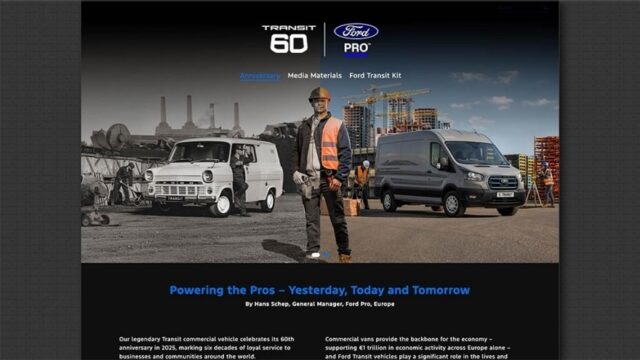Ford Transit Marks Six Decades of Service
The Ford Transit, recognized globally as the most popular van, has officially reached its 60-year milestone since its inception in 1965. This iconic vehicle has not only served the transportation needs of businesses but has also gained a unique reputation among a diverse array of users, ranging from delivery services to creative artists and even a few less conventional occupations.
Cultural Significance and Evolution
The Ford Transit has undergone numerous changes over the decades, adapting to the evolving requirements of consumers and industries alike. Originally designed for utility and functionality, it has expanded its role, becoming a symbol of freedom and adaptability. This evolution speaks to the brand’s commitment to innovation, ensuring that the Transit meets the needs of the modern world.
Seoul’s Innovative Response to Loneliness
In an effort to combat the pervasive feelings of isolation, Seoul’s convenience stores have introduced a unique concept centered around community engagement. These establishments aren’t just about selling goods; they offer a warm atmosphere for patrons to enjoy comforting meals and fellowship.
A Community-Centric Approach
Among the highlights of this initiative are the comforting bowls of ramen and various activities designed to encourage interaction among visitors. With South Korea experiencing rising rates of loneliness, these convenience stores have become essential spaces where individuals can gather, chat, and break the cycle of solitude.
AI Innovations Showcase Competitive Spirit
OpenAI recently hosted a chess tournament featuring multiple AI models from leading tech firms, including Anthropic and Google. The competition aimed to determine which AI could outperform the others in strategic gameplay. OpenAI’s model proved its supremacy, emerging victorious.
Corporate Dynamics and Challenges
In a different technological sphere, Trump has called for the resignation of Intel’s CEO due to alleged ties with China, highlighting ongoing tensions in the tech industry. The demand places additional scrutiny on Intel as it struggles to keep pace in a fiercely competitive market.
Trade Tariffs and Economic Implications
The United States is experiencing an uptick in revenue from increased tariffs, although some nations are beginning to redirect their trade routes to evade these fees. This shift raises questions about the long-term implications for the US economy and its global trading relationships.
Tariff Table Overview
| Country | Tariff Rate (%) | Impact |
|---|---|---|
| China | 50% | Increased Trade Diversion |
| India | 50% | Potential Economic Slowdown |
| EU | 40% | Increased Tension in Trade Relations |
Looking Ahead: A Blend of Tradition and Innovation
As various industries adapt to changing environments, from automotive to retail, the foundational theme remains consistent: balancing tradition with innovation. The Ford Transit illustrates enduring utility, while South Korea’s convenience stores reflect the need for community. Meanwhile, the evolving landscape of AI and trade presents both challenges and opportunities for future growth in the global economy.














